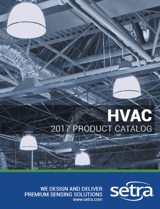While it is important to maintain proper relative humidity levels in office buildings for worker comfort and productivity, it is also just as important to maintain proper levels in factories, production facilities and art galleries to protect industrial, commercial and artistic products.
Paper Manufacturing
High humidity is an especially damaging problem in the paper, packaging, and printing industries. Relative humidity above 60% can cause paper to expand and curl; the damage of which is irreversible. When moisture-laden, cardboard swells at the periphery, it becomes unsteady and unsafe for stacking. For printers, uncontrolled humidity can mean poor print quality for magazines, brochures, banners, etc.
Pharmaceutical Manufacturing

Moisture can wreak havoc in pharmaceutical production if it is not controlled. Trace moisture can be absorbed on the surface of drugs, increasing the rate of decomposition and shortening shelf life. In addition, many pharmaceutical tablets are coated and then dried at a specific relative humidity. Most anything above or below that optimum relative humidity level alters drying times, which negatively modifies drug release rates. Moreover, manufacturing pharmaceutical products at extremely high humidity levels can negatively affect product quality, yield, and/or visual appearance.
Robots & Paint Spray Booths
Low or high relative humidity can negatively effect industrial manufacturing as well. For example, in automotive paint spray booths, high-moisture content disrupts proper adherence of paint to vehicles. Similarly, robots and other factory floor capital equipment with sensitive electronic circuits require a constant temperature/humidity environment to work properly. Low relative humidity levels in conjunction with movement of people, carts, forklift trucks, automated guided vehicles, etc, can cause static discharge. This can be damaging to the unit’s electronics if transferred from worker to machine.
Testing Facilities
At the other extreme, testing facilities require an extremely wide temperature and humidity range. A wind tunnel, for example, enables testing at temperatures from -40ºC (-40ºF) to 66ºC (151ºF) and humidity levels from 0 to 100 percent RH. This makes it possible for automakers to test how humidity affects drag on a new production vehicle. Consequently, it is extremely important that the test chamber delivers the specified temperature/humidity combination.
Museums
 It is especially important to provide proper humidity and temperature levels at museums, art galleries, and historical buildings. Extremes in temperature and humidity can have a harmful effect upon the preservation of artwork and rare documents. High humidity can cause chemicals and acids within artwork to break down and compromise the effectiveness of glue in a book binding. Consequently, museums generally keep artwork in a well-ventilated area at a constant temperature and a narrow relative humidity range of 30 to 50 percent RH.
It is especially important to provide proper humidity and temperature levels at museums, art galleries, and historical buildings. Extremes in temperature and humidity can have a harmful effect upon the preservation of artwork and rare documents. High humidity can cause chemicals and acids within artwork to break down and compromise the effectiveness of glue in a book binding. Consequently, museums generally keep artwork in a well-ventilated area at a constant temperature and a narrow relative humidity range of 30 to 50 percent RH.
At the Smithsonian, for example, the current environmental guidelines are 45 percent RH ±8 percent RH and 70ºF ±4ºF for exhibitions and storage spaces. These precise levels are maintained by installing numerous temperature and humidity sensors feeding exact measurements into a central control system.
CLICK HERE to view Setra's Relative Humidity Transmitters in Wall, Duct and Outdoor Air models.



